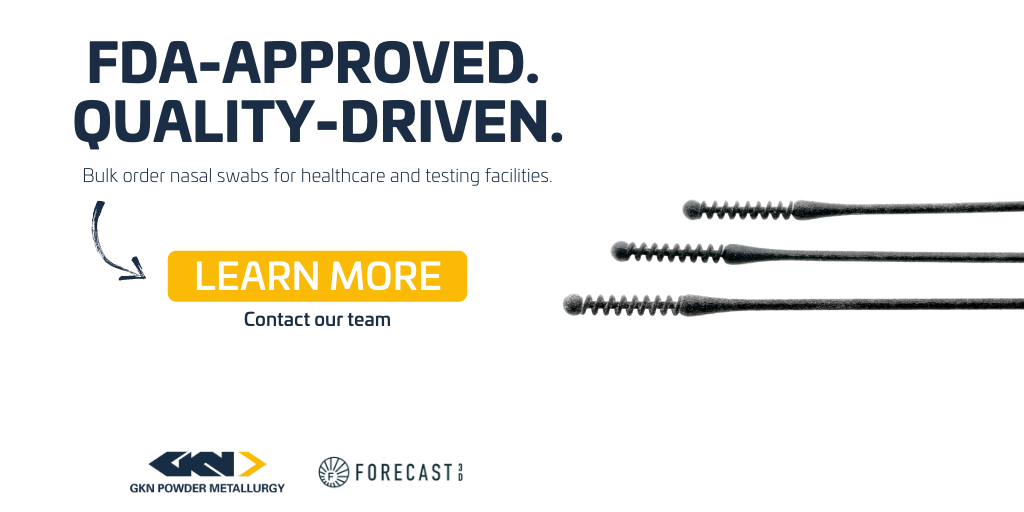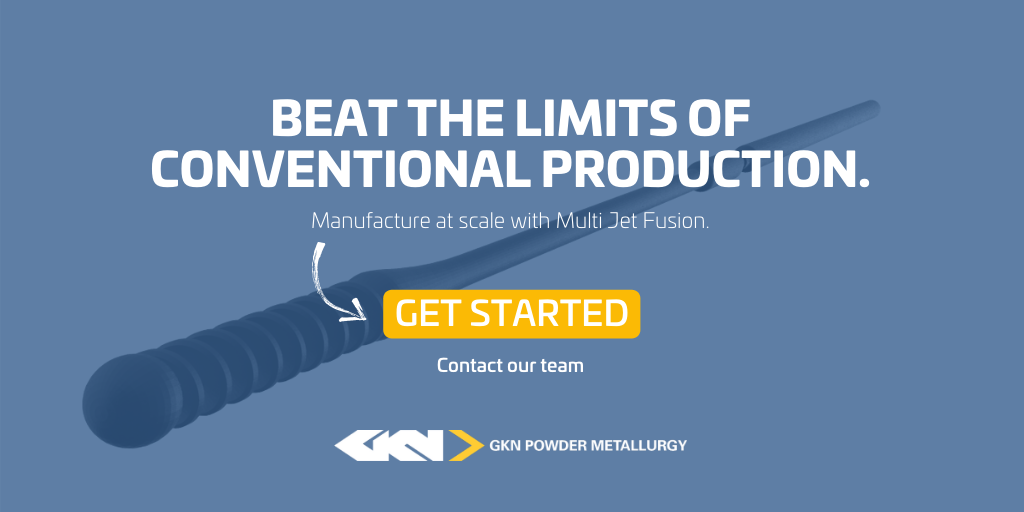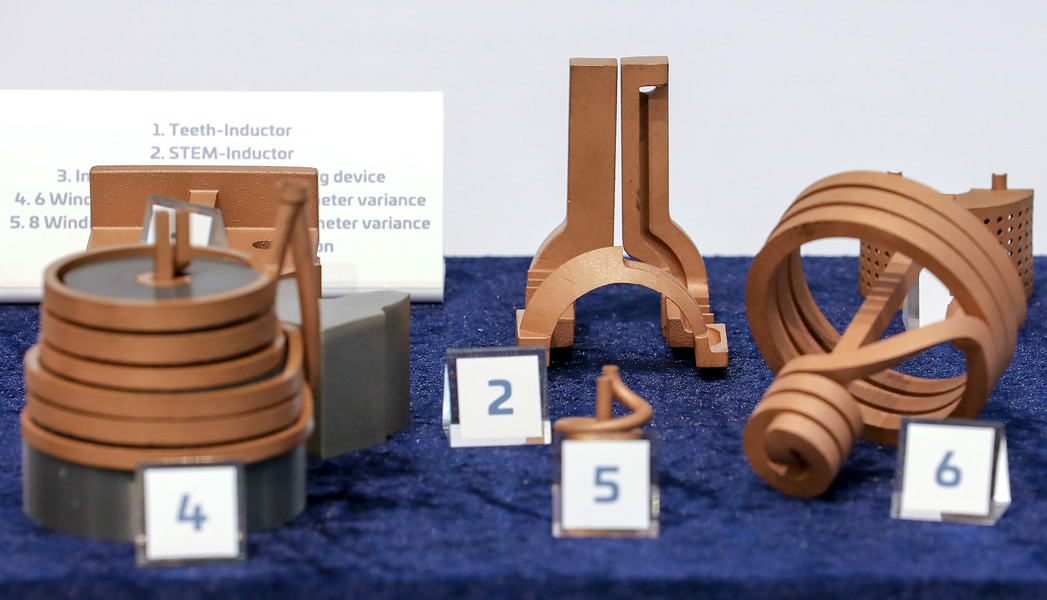Read time: 2 mins
Date posted: Jun 2020
Theme: Additive Manufacturing
Behind the scenes of FORECAST 3D's 1 millionth nasal swab production
A common misconception of 3D printing’s capabilities is the restriction to low-series, prototype capacity. As COVID-19 disrupted traditional manufacturing supply chains, the 3D printing industry stepped up to the challenge to fill production shortages and circumvent restrictions with high flexibility.
The technology's high responsiveness in times of crisis helped to change the manufacturing industry’s perception of additive manufacturing from prototyping to production. Demonstrating 3D printing’s scalable advantages, FORECAST 3D, a GKN Powder Metallurgy company, will reach the production milestone this week of 3D printing over 1 million of its nasopharyngeal (NP) swabs. The swabs will be shipped for use in COVID-19 test kits by next month.
Industrial 3D printing at scale
COVID-19 created an urgent demand for personal protective equipment, enabling the FORECAST 3D team to highlight its ability to manufacture at scale. The strengths of 3D printing – design flexibility, on-demand production and adaption on the fly – came to life as FORECAST 3D addressed the demands of urgently needed medical protection devices for healthcare professionals around the world.
In May, FORECAST 3D partnered with Abiogenix, Fathom, and HP to produce nasal swabs through Multi Jet Fusion 3D printing technology for use in COVID-19 test kits. FORECAST 3D launched the swabs last month after spending about six weeks rapidly developing a no-tooling manufacturing solution with a quick-sale digital design. Traditionally, the nasal swabs are produced through conventional injection moulding which requires mold tooling for scale-up production.
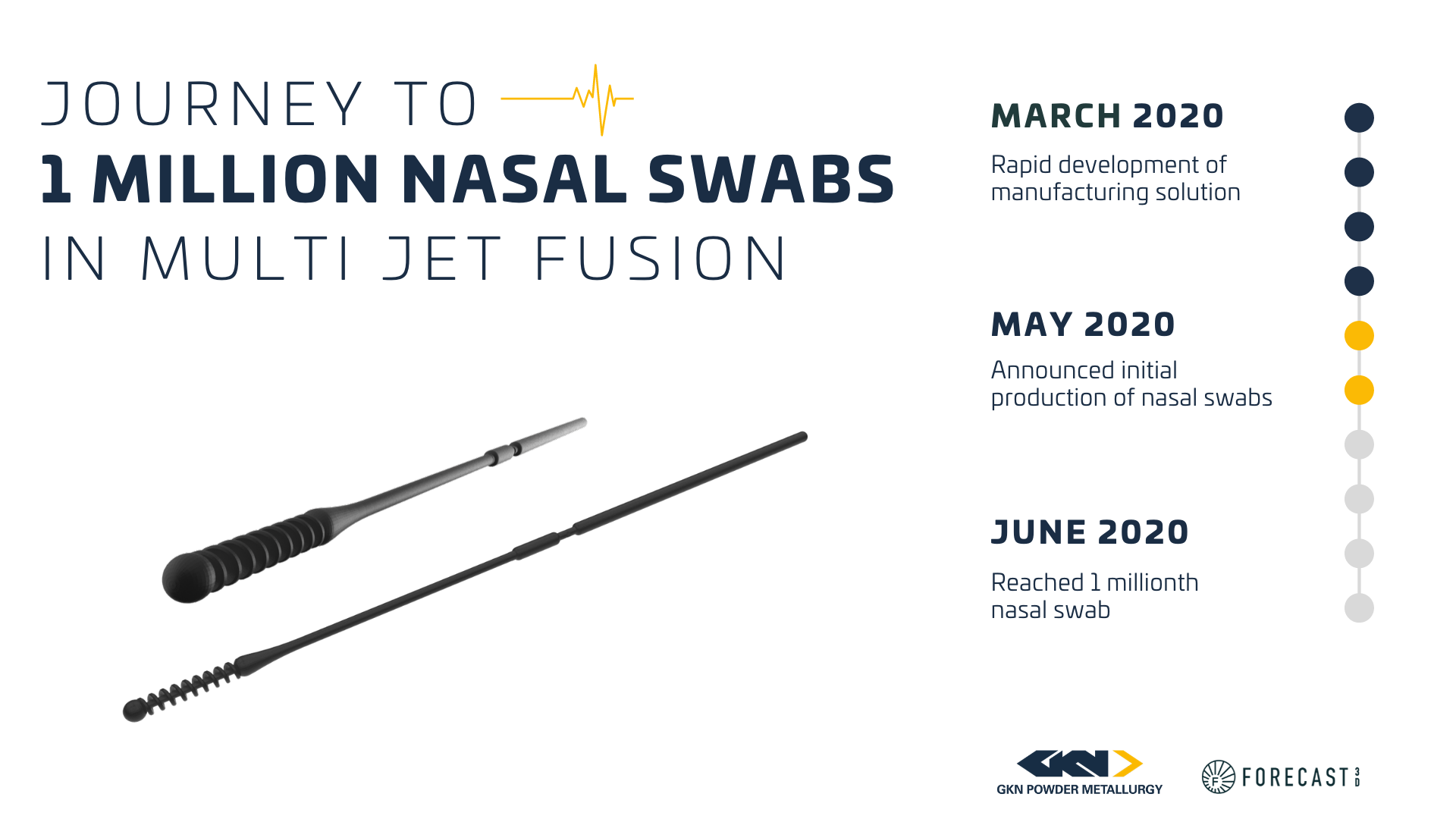
FORECAST 3D began rapid development to determine a manufacturing solution for the nasal swab design in March 2020. Three months later, the 1 millionth nasal swab has been 3D printed for COVID-19 test kit shipment.
FORECAST 3D can mass produce up to 100,000 swabs per day with Multi Jet Fusion using its fleet of industrial-grade HP Jet Fusion 3D printing systems.
“As a leading 3D parts provider, FORECAST 3D is responding to the urgent need for test swabs in a massive way,” said Philipp Jung, global head of end-to-end solutions, HP 3D Printing and Digital Manufacturing. “COVID-19 has exposed the disruptive benefits of 3D printing and FORECAST 3D is leveraging our optimized HP swab design as well as the speed, quality and flexibility of HP’s advanced 3D printing solutions to meet the ongoing demands of the pandemic. The collaboration demonstrates the power of new ecosystems and the impact of distributed manufacturing.”
The Multi Jet Fusion process was utilized for the redesigned nasal swab to reach the same functionality as the conventional nasal swab manufactured through injection moulding. The nasal swabs are now 3D printed in one piece, allowing for quicker scale up of production.
A chance for rapid product development
For initial diagnostic testing for COVID-19, CDC recommends collecting and testing an upper respiratory nasopharyngeal or oropharyngeal specimen. The nasopharyngeal spiral swab design was selected from 150 designs evaluated in expedited clinical tests. The swab designs were evaluated for patient sensitivity, ability to collect sufficient viral fluid, comfort, and breakpoint reliability.
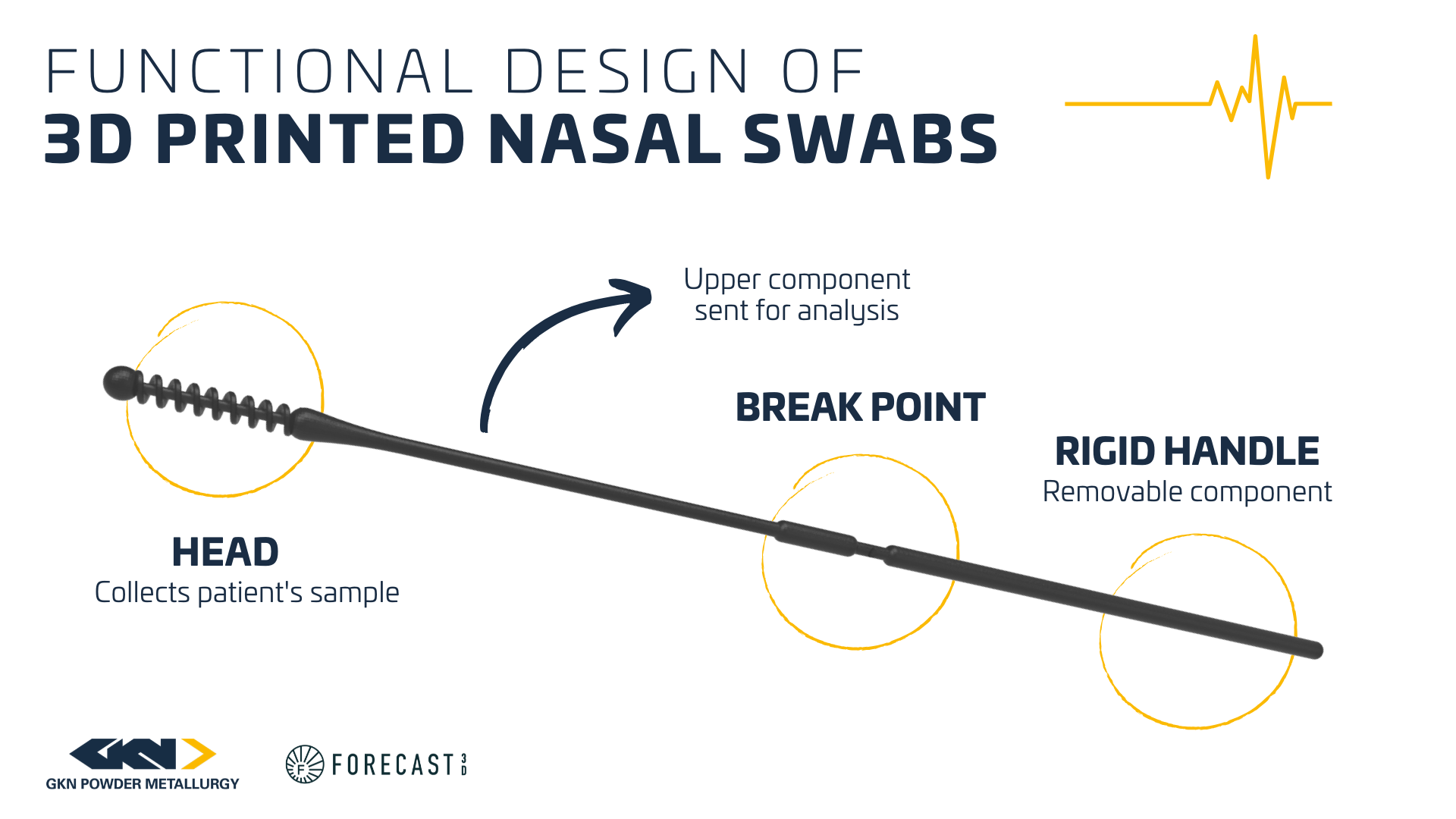
“With more than one million swabs ordered in just a month, it’s clear there was a need for healthcare and testing facilities to quickly get these critical supplies,” said Ken Burns, Commercial Vice President at FORECAST 3D. “We are proud to have been able to use additive manufacturing to quickly adapt and accelerate production to serve this need.”
Along with nasal swabs, FORECAST 3D has also partnered with HP to provide readily available offerings of face shields, stopgap masks, and other critical PPE products.
GKN Powder Metallurgy acquired US-based plastic parts provider FORECAST 3D in 2019. The acquisition enabled both companies to deliver industrial 3D printing capabilities to a wide range of industries across a larger global footprint. Customers can now rely on an all-encompassing partner for mass production in powder metallurgy, metal additive manufacturing, and plastic 3D printing.
